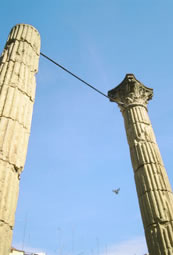
Prehistoric Heritage
We must mention the artistic demonstrations that the prehistoric science has called rupestrian art, because they get us in touch with the remotest human societies of Europe. The Costa Daurada has numerous and very representative examples of the Eastern rupestrian art, which was developed after the climatic changes that brought the deep socioeconomic transformations of the Neolithic.The cave paintings are characterized by the human presence which is the protagonist figure on its ritual, war, harvest or hunting scenes that were always carried out in group. The prehistoric artists become more interested in picking up the movement and the effect of synthesis, than in getting the detail or the range of colors. The pictorial samples are dynamic, expressionist and one-color painted. Most of these paintings, made on free rocks or little deep shelters, are basicly documented at the meridional part of the Costa Daurada, from the Garrigues and the Conca de Barberà as far as the Montsià, and also at the bottom of the long cliffs of the Montsec.
Among the caves with more pictorial richness it is necessary to point out those of Cogul and those of Ulldecona. The samples of the Cogul are very different: most of them are figurative, with black and red drawings of people and animals, but there are also some schematic and abstract paintings - probably of later chronology -. The shelter number 1, in Ulldecona, has an extense and brilliant scene of hunting that shapes a frieze with almost a hundred of figures, dated in a preceramic moment.
